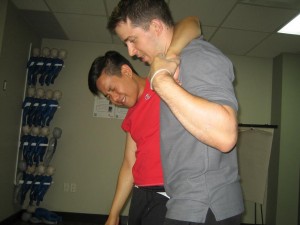Overview of Anaphylaxis
Can you think of anything that you have had an allergic reaction to? Some people are so allergic to certain things that their bodies react quickly and in some cases it can be deadly if not treated quickly. Doctors refer to this condition as ‘anaphylaxis’.
Disclaimer
The material posted on this page on respiratory emergencies, including anaphylaxis and allergic reactions, is for learning and educational purposes. Learn to recognize and manage circulatory and respiratory emergencies by registering for a first aid training course with one of our providers.
Causes of Anaphylaxis

We are going to look at four main causes of anaphylaxis.
- Certain types of food can cause this reaction
The most expected causes of anaphylaxis are peanuts, shellfish, milk, eggs, soy, fish, sesame and nuts. Though, there are some cases where various other types of food can negatively impact a person and cause anaphylaxis. Even a small portion of food can lead to a person becoming quite ill. Even being close to certain food can cause a person to become sick, even if the individual doesn’t eat the food.
- Insect bites or stings can cause a reaction
The most common insect stings or bites that cause a serious allergic reaction are bee stings, wasps, and various types of ants. Sometimes ticks and even fire ants can lead to allergic reactions.
- Latex
A kind of rubber which is usually used in gloves, some first aid bandages or even in figurines and dolls, etc.
- Certain kinds of medications.
Severe allergic responses can be caused by taking penicillin and even aspirin.
How To Spot An Allergic Reaction
If a person is having an allergic response to something, they might experience some of the following symptoms:
- A burning sensation surrounding the mouth.
- Red rashes start to form on the skin.
- The face, lips, and eyes look puffy.
- Feeling sick or actually feeling woozy.
- Breathing is problematic because there is swelling in the lungs and airways.
- The person might have a husky voice or find it hard to talk.
- They may start coughing and become breathless.
- The person might appear white or pale, and feel faint.
- The person might have very itchy skin, where they are chafing and rubbing to try and soothe the irritation.
- Itchy red bumps may appear on the skin.
- Everything may start to swell and look puffy.
What Should You Do
If a person at school starts swelling up, trying to breathe in air and has red rashes on their skin, call a teacher immediately. The teacher will give them an injection and request an ambulance. If you are not at school and you notice your mate is starting to have breathing problems, then ask a nearby adult to ask for the emergency services. The dispatcher will be able to send out an ambulance right away, and also provide some first aid advice until they get there.
